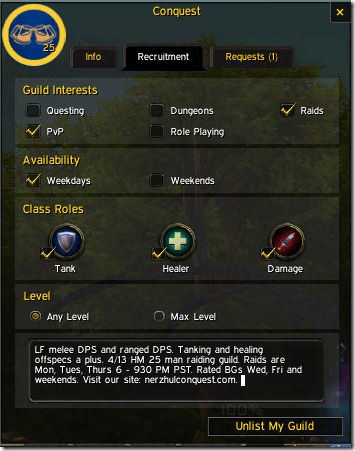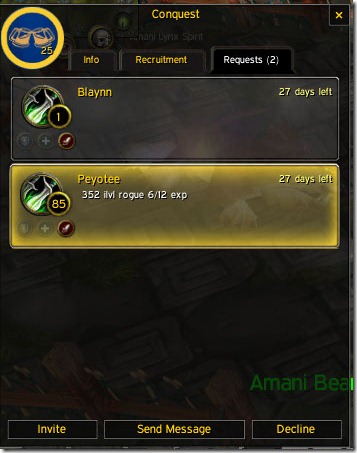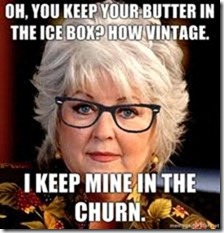Plan on invading Troll instances today? Not quite sure what to expect? Got you covered. You can find the TLDR versions here. Comment if there’s any additional noteworthy mechanics that you find on live servers that glossed over. Notes were taken from my experiences on the PTR and from kill videos.
Zul’Gurub
Venoxxis
Stay within the maze.
Players will get linked (Toxic Link) which deals damage to both players. Break the link by increasing the distance between the two players. Poison bolts get shot at players, heal through it. Boss has a frontal cone attack. At some point, watch out for pools of poison. Not sure if that’s linked to time or health.
Bloodlord Mandokir
Randomly targets a player and one-shots them. Mandokir levels up. Kill the raptor. The raptor goes around killing ghosts (which will resurrect you when you de) and you have a certain amount of them.
Watch out for big conical, fire spike thing
Kilnara (Panther boss)
First 50%: Tank and spank. Last 50%: Calls in panther buddies.
Interrupt Tears of Blood. Pull 2 packs of panthers during phase 1 and kill them to reduce the amount of panthers coming in the final phase. When they do engage you, AoE them down.
Zan’zil
Three phases (Fire, Ice, Poison)
Zombie troll phase: Grab red cauldron . Gives your attacks additional AoE powers. Destroy zombies.
Berserker phase: One big mob? Grab the Ice cauldron. Attacks gain freezing powers. Slows down Berserker and kills them quick.
Cloud phase: Entire environment covered in gas. Grab poison cauldron, become i mmune.
Jin’do
Phase 1:
Casts a green shield bubble reducing magic effectiveness within it. Keep the tank and Jin’do within it. When Jin’do casts Shadow of Hakkar, run into the shield. Then run back out and resume DPS. Last I checked, he’ll do an AoE chain nuke of some kind if you stay too long within the shield.
Phase 2: Hakkar
There are four chains on the ground. They each have 1 million health. Those chains need to be broken. Look for Gurubashi Spirits. Really big mobs that have the ability to jump. The group needs to stay near chains so that the big guys will jump onto the chain thereby breaking it. Arrow on the player’s head signifies the target. Clear out the Twisted Spirit mobs.
Kicker: Need to keep moving to dodge assorted Shadow Blasts.
Zul’Aman
Akil’Zon (Eagle boss)
Eagles will pick players up and fly them around. DPS the birds. If you’re picked up, you can still DPS them. Look for the thundercloud and stand beneath it.
Nalorakk (Bear boss)
Standard tank and spank. Also does an AoE silence.
Charges the furthest player standing away. Inflicts a +500% damage taken debuff on the target. Don’t get charged twiced. Rotate with other group members in being the furthest person away. (Thanks Katherine and Wynn)
Halazzi (Lynx boss)
Kill totems. Kill the pet Lynx (likes to randomly rush players, healers need to stay on top of that). Lynx form frequently hits random players for massive damage. Your healer needs to be on the ball. Any self surviving cooldowns are encouraged to be used. (Thanks Katherine)
Jan’Alai (Dragonhawk)
Has a straight line fire attack, watch for it.
Watch for fire orbs and make sure you don ‘t stand near them. That hit box is a little larger than the graphic. Kill 1 of the hatchers. Healers need to dispel a fire debuff which comes from the hatched eggs. If Jan’Alai drops beneath a certain percentage, he hatches all of the eggs.
Hexlord Malacrass
Only 2 ads now. Kill them, blow up Malacrass. Remember Malacrass will assume the powers at random of the different classes in your group due to his power drain.
Daakara
Similar to Zul’Jin, he instead undergoes 2 animal forms instead of 4. Switches phases every 33%.
- Lynx form: He rushes everybody and his damage gradually ramps up.
- Dragonhawk form: He will dish out fires in a line from him as a center point. Watch out for flame pillars. It was a pain in BC, it’s a pain now.
- Bear form: Randomly charges a player.
- Eagle form: Spawns 5 random cyclones. They tend to stay stationary but will shift position every few seconds. Will shoot out lightning to players nearby.


